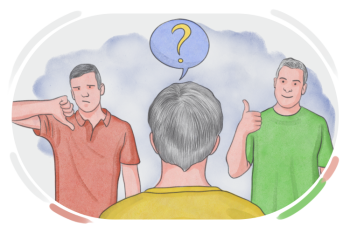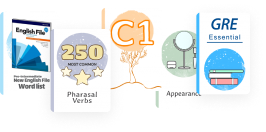Yes/No Questions
In this lesson we learn about yes/no questions, exploring advanced structures and their use in formal, informal, and nuanced contexts. Clear explanations and practice exercises to help you learn.

What Are Yes/No Questions?
Yes/No questions need either a yes or a no as the answer. Because of this limitation in response, they are also called closed questions. They are used to seek confirmation or denial of a situation, fact, or opinion.
Yes/No Questions: Structure with Auxiliary Verbs
When there is an auxiliary or modal verb in the sentence, the yes/no question is formed using the following structure:
auxiliary verb (be/have) + subject + main verb
or
modal verb (could/should/etc.) + subject + main verb
Here are some example yes/no questions with modals and auxiliaries in the present and past tense:
Present | Past | |
|---|---|---|
Be | Is she coming? | Were you leaving? |
Have | Have they arrived yet? | Had you visited Paris before? |
Modals | Should I call my boss? | Could you have finished the project earlier? |
Sentences in present and past simple tenses that do not include any modals or the auxiliary verbs "be" or "have" require addition of the auxiliary verb "do" before the subject to form a yes/no question. In such cases, the verb "do" is conjugated for tense and person and the main verb changes to its base form.
Statement | Question |
|---|---|
We usually go to the park. | Do you usually go to the park? |
He liked ice cream a lot. | Did he like ice cream a lot? |
Questions with More Than One Auxiliary Verb
When there is more than one auxiliary verb or a modal verb with one or more auxiliary verbs, the first auxiliary or modal verb comes before the subject and the others come after it. The structure is as follows:
auxiliary verb (1) + subject + auxiliary verb (2) + main verb
or
modal verb + subject + auxiliary verb (1) + auxiliary verb (2) + main verb
Is my mobile being monitored?
Has the show been canceled?
Should I have been recording this show?
Do not say "Should have been I recording this show?"
Warning
The main verb cannot be used before the subject. Only auxiliary and modal verbs can come before the subject.
Where did he hide the box? (Do not say: Where did hide he the box?)
Yes/No Questions: Structure Without Auxiliary Verbs
When "be" is the main verb of the sentence, there is no need for an auxiliary. In this case, the subject and the main verb are inverted so that the structure is like be + subject.
Is the food nice in this restaurant?
Was she upset when you told her the truth about that incident?
When the sentence includes "have" as a main verb and not as an auxiliary, it can form a question without an auxiliary, but note that this structure sounds rather formal.
Have you a driver's license?
This sentence sounds formal.
The more common structure for a question with "have" as a main verb involves using "do" as an auxiliary, just like other main verbs:
Do you have a driver's license?
This sentence sounds neutral.


Answering a Yes/No Question
The answer to a yes/no question can be short or extended.
Short Answer
As the name suggests, the answer to a yes/no question can be a simple "yes" or "no". However, there are other, more informal alternatives as well.
- 'Is he really your son?' + 'Yep!'
- 'Can you do the dishes?' + 'Nah! I'm busy!'
Occasionally, the subject and auxiliary verb can follow the "yes" or "no". This structure is especially useful when a simple "yes" or "no" might cause ambiguity.
- 'Haven't you seen Jennifer?' + 'No, I haven't.'
- 'Are you Lisa?' + 'Yes, I am.'
A yes/no question can also be answered using only the subject and auxiliary verb instead of "yes" or "no".
- 'Did you call Mom today?' + 'I did.'
Long Answer
Sometimes a full-sentence answer is offered for more clarity.
- "Can you swim?" + "Yes, I can swim well. "
The answer might not include a "yes" or "not", but offer information that answers the question.
- 'Do you know Brad?' + 'I've known Brad since kindergarten.'
Here, the answer means "yes" without directly saying "yes"
- 'Do we have any apples in the fridge?' + 'I just ate the last one.'
Negative Yes/No Questions
Yes/no questions can be expressed negatively. Normally, in spoken English, the contraction n't is used after the auxiliary, followed by the subject. However, the full form of 'not' can be used as well. In this case, the negative marker comes after the subject. Keep in mind that the full form is more formal. Look at the examples:
Isn't that Mr. Hank our English teacher?
In the contracted form the word order is auxiliary + n't + subject
Should we not wait for him to start?
In the full form the word order is auxiliary + subject + "not"
Negative Yes/No Questions: Uses
Negative Yes/No Questions are usually used in the following contexts:
to check or confirm something that is believed or known to be true;
to suggest that something is the best option or course of action;
to make invitations, offers, and complaints.
Isn't that the most luxurious hotel in this city?
Shouldn't we call for a cab?
Won't you stay for dinner?
Can't you speak a little louder? I can't hear a thing!
Statement Questions
Sometimes declarative sentences (statements) can be used as a yes/no question. In speech, these questions are distinguished from the statement by intonation.
In writing, the statement and the question are distinguished by using a question mark (?) for questions and a period (.) for statements.
Jackson is getting married?
He's your brother?
Statement questions can be both affirmative and negative .
You're a teacher?
You're not a teacher?
Statement Questions: Uses
Statement questions are used in the following contexts:
to confirm or check something already known to be true (falling intonation);
to express surprise (rising intonation).
So, tomorrow is mother's day?
checking for confirmation
- 'Manfred proposed.' + 'He proposed?!'
expressing surprise
Review
Yes/ No questions, as the name suggests, require a "yes" or "no" as the answer. They are formed by putting the auxiliary before the subject, and using a question mark at the end.
Here are auxiliary verbs that are used to make yes/no questions.
am | is | are |
have | has | had/was/were |
do | does | did |
can | could | shal |
should | may | might |
will | would | must |
Here is an example of a yes/no questions and its answer:
Are they going to dinner together?
"Yes, they are. They are going to dinner together."
"No, they aren't. They aren't going to dinner together."
Quiz:
Which Yes/No question uses "do" correctly?
Do she likes coffee?
Does your brother have a car?
Did they went to the concert?
Do you are feeling tired?
Sort the words to form a negative Yes/No question.
Match the Yes/No question to its correct structure.
Change each statement to a yes/no question.
She is coming to the party. →
to the party?
He could have helped you with that. →
me with that?
They were not at the meeting. →
at the party?
He likes to play soccer. →
to play soccer?
Which of the following is NOT a valid way to answer a yes/no question?
"Yes, I am."
"I did."
"I don’t know."
"Yep!"
Comments
(0)